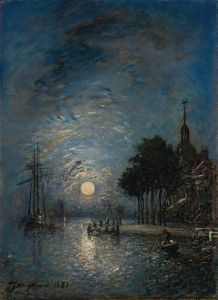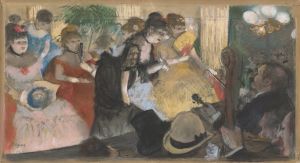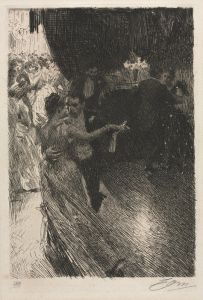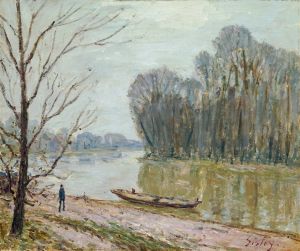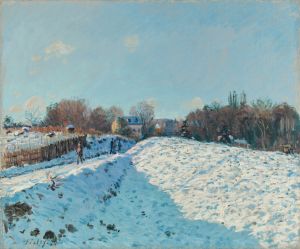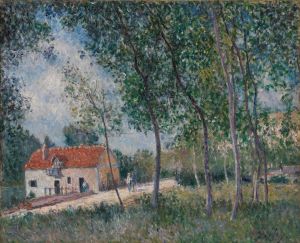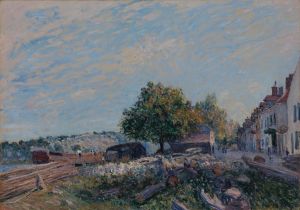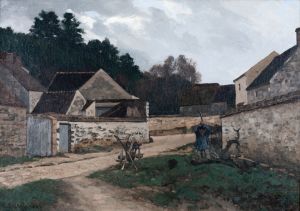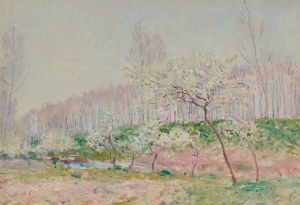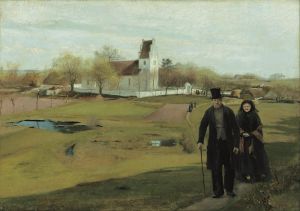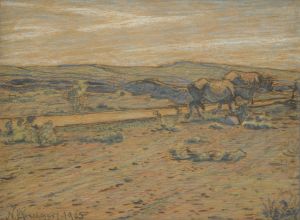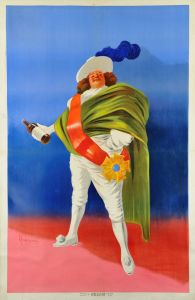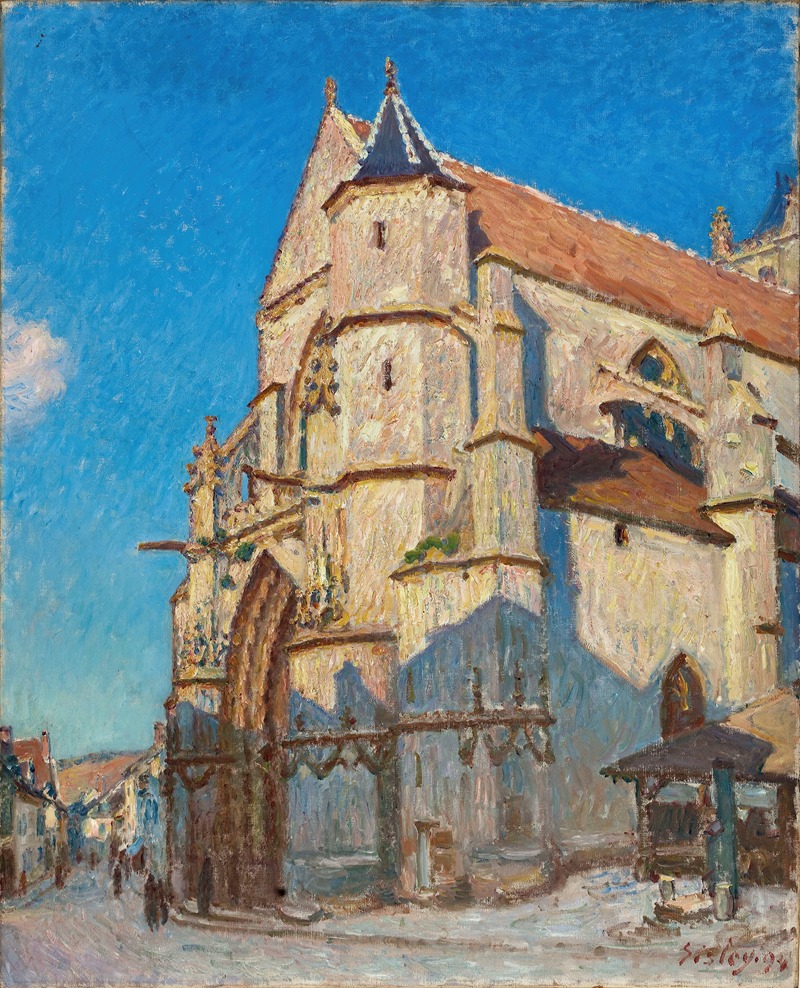
L’Eglise de Moret
A hand-painted replica of Alfred Sisley’s masterpiece L’Eglise de Moret, meticulously crafted by professional artists to capture the true essence of the original. Each piece is created with museum-quality canvas and rare mineral pigments, carefully painted by experienced artists with delicate brushstrokes and rich, layered colors to perfectly recreate the texture of the original artwork. Unlike machine-printed reproductions, this hand-painted version brings the painting to life, infused with the artist’s emotions and skill in every stroke. Whether for personal collection or home decoration, it instantly elevates the artistic atmosphere of any space.
Alfred Sisley, a prominent figure in the Impressionist movement, painted L’Eglise de Moret (The Church at Moret) as part of a series of works depicting the church of Notre-Dame in the small town of Moret-sur-Loing, located in the Île-de-France region of France. Sisley, who was known for his dedication to landscape painting, moved to Moret-sur-Loing in 1880 and spent the last years of his life there. The town and its surroundings became a significant source of inspiration for his art.
The painting captures the façade of the Gothic church, highlighting its architectural details and the effects of light and atmosphere. Sisley’s Impressionist style is evident in his use of loose brushstrokes and his focus on the interplay of light and shadow on the stone surface of the church. The work reflects his interest in capturing the transient qualities of natural light and the changing moods of the environment.
Sisley often painted the church at different times of the day and in varying weather conditions, creating a series of works that explored the effects of light and atmosphere on the same subject. This approach was similar to that of his contemporary Claude Monet, who famously painted series of the Rouen Cathedral and other subjects under different lighting conditions. Sisley’s L’Eglise de Moret series demonstrates his mastery of color and his ability to convey a sense of place and time.
The church of Notre-Dame in Moret-sur-Loing, built in the 12th and 15th centuries, is a notable example of Gothic architecture. Its intricate details and historical significance made it an appealing subject for Sisley, who often sought to depict the harmony between human-made structures and the natural world. The town of Moret-sur-Loing itself, with its picturesque streets and proximity to the Loing River, provided Sisley with a wealth of scenic views to incorporate into his work.
Today, L’Eglise de Moret and other paintings from this series are celebrated as important examples of Sisley’s contribution to Impressionism. They showcase his ability to capture the essence of a place through his keen observation of light, color, and atmosphere. Some of these works are housed in major art museums and private collections, where they continue to be admired for their beauty and technical skill.
Alfred Sisley remained relatively underappreciated during his lifetime compared to some of his contemporaries, but his works, including L’Eglise de Moret, have since gained recognition as masterpieces of Impressionist art.





